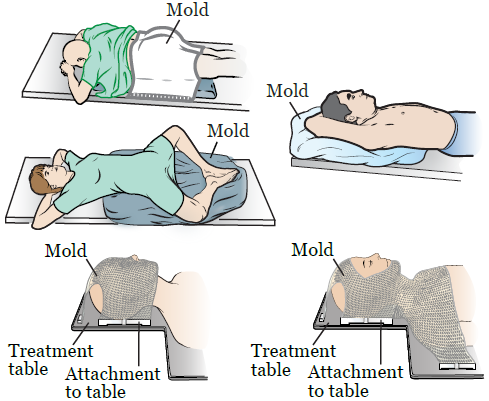This information explains what to expect during your palliative radiation therapy simulation and treatments. It also explains side effects you may have.
Before your simulation
Take devices off your skin
You may wear certain devices on your skin. Before your simulation or treatment, device makers recommend you take off your:
- Continuous glucose monitor (CGM)
- Insulin pump
If you use one of these, ask your radiation oncologist if you need to take it off. If you do, make sure to bring an extra device to put on after your simulation or treatment.
You may not be sure how to manage your glucose while your device is off. If so, before your appointment, talk with the healthcare provider who manages your diabetes care.
During your simulation
Simulation (also called a mapping or planning session) is a procedure to plan your radiation treatments. It’s done to map your treatment site, make sure you get the right dose (amount) of radiation, and limit the amount of radiation that gets to your nearby tissues.
During your simulation, we may make a mold of part of your body (see Figure 1).

Figure 1. Examples of radiation therapy molds
You’ll use the mold during your simulation and all your treatments to help you stay still and make sure you’re in the same position every time. Making the mold will take about 15 minutes.
During your treatment(s)
A staff member will bring you to the treatment room. There, the radiation therapist will greet you and help you onto the treatment table (see Figure 2). You’ll be positioned exactly how you were during your simulation. Then, you’ll get your treatment.

Figure 2. Examples of radiation treatment machines
You’ll be in the treatment room for 15 to 90 minutes, depending on your treatment plan. Most of this time will be spent making sure you’re in the right position. The radiation therapist will walk in and out of the room, but they’ll be able to see and hear you the whole time.
Side effects
You’ll probably have some side effects during and after your treatments. Which one(s) you have depends on the area of your body being treated. If you have any side effects, be sure to tell a member of your radiation therapy team. We’ll help you manage them.
You may have 1 or more of the following side effects:
- Nausea or vomiting: Nausea is when you feel like you might vomit (throw up). You may have nausea, vomiting, or both during your treatment. We may prescribe an anti-nausea medication to help prevent this. You’ll take the medication 30 minutes before each of your treatments.
- Esophagitis: Esophagitis is when your esophagus (food pipe) is irritated or swollen. It can make it difficult or painful to swallow. If your esophagus is in the area being treated, you may have esophagitis starting about 1 week after your treatment ends. Esophagitis can last for up to 1 week. We’ll talk with you about ways to manage it.
- Bowel changes: During your treatment, your bowel movements may be softer or happen more often than usual.
- Skin reactions: Your skin may become pink or tanned about 2 to 3 weeks into your treatment. As you continue treatment, it may become bright red or very dark. It might also feel dry and itchy and look flaky. You can use lotions meant for dry skin (such as Eucerin®) to help keep it moisturized. Protecting it from the sun by wearing sunscreen will also help. These skin reactions will start to gradually get better about 3 or 4 weeks after your treatment ends.
- Fatigue: Fatigue is a feeling of being tired or weak, not wanting to do things, not being able to concentrate, or feeling slowed down. Fatigue can range from mild to severe. You may develop fatigue during or after your treatment, and it may last for 6 weeks to 1 year after your treatment ends.
- Pain flare and swelling around the treatment site: Pain flare is a temporary increase in pain. During your treatment, the area being treated may become swollen and painful. We may prescribe medications to help with this.
